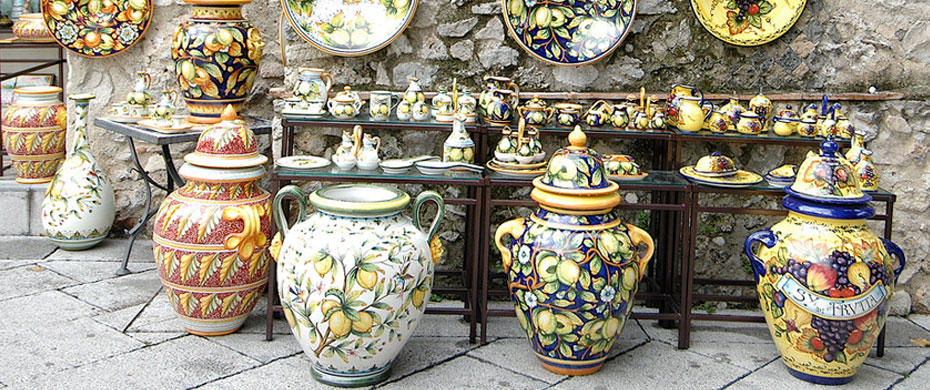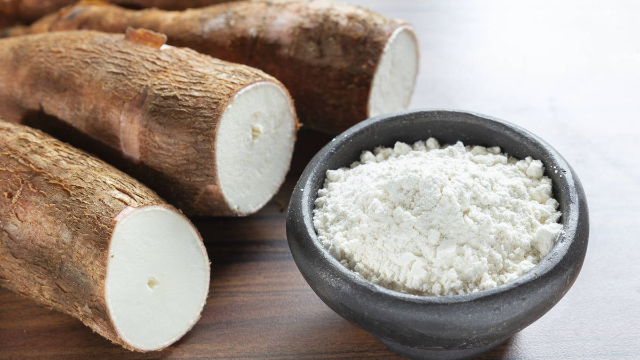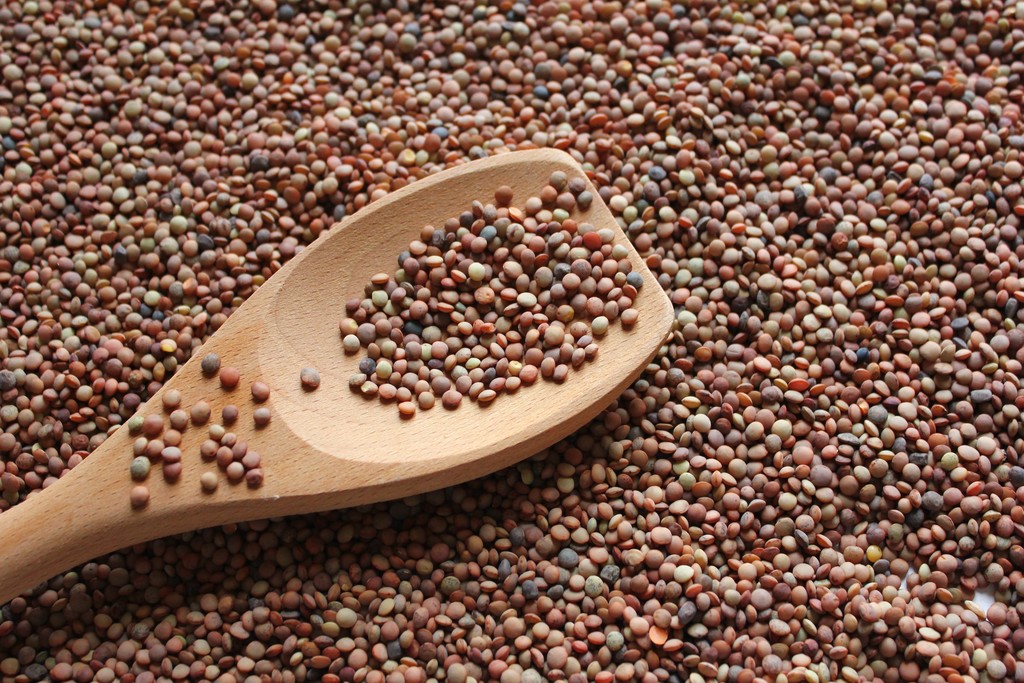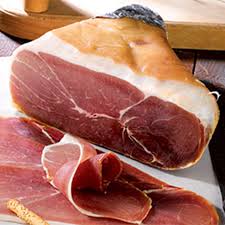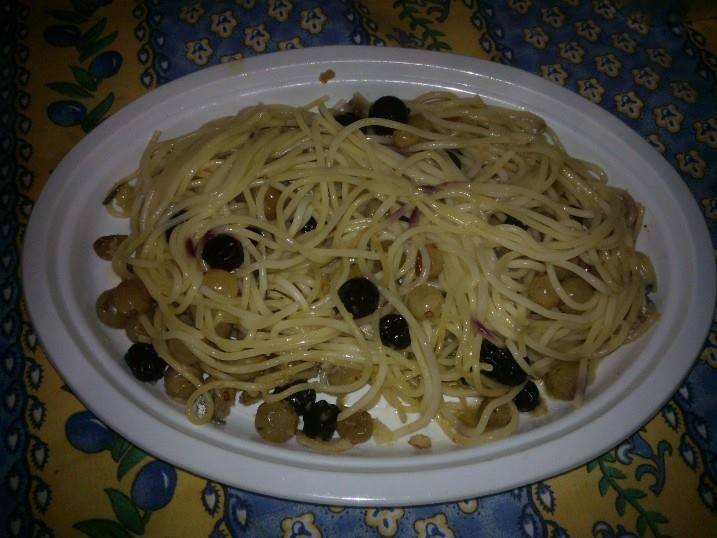In these small seaside towns, artistic ceramics decorate alleys and streets, making the urban and coastal landscape even more striking.
These small decor elements embellish not only the streets, but also the interiors of homes, hotels and restaurants. In fact, specific Vietri ceramics are produced for kitchens, bathrooms or more generally for interiors. Their colors give a unique harmony that we invite you to try for yourself, if you are lucky enough to visit the Amalfi Coast.
In these coastal areas, moreover, it is very common for inhabitants to choose objects made of Vietri ceramics for wedding favors and various gifts.
The production process is long and complex. The first stage involves shaping the clay on a potter’s wheel, in which the shape and structure is given to the work. This is followed by a first stage of firing in the kiln with a subsequent glazing.
Vietrese ceramic plates and tiles are dipped in a white glaze, allowed to dry and only then decorated by hand. The colors will be brighter due to a second firing that will fix the designed works.
The most important feature of objects made with Vietri ceramics is that there is not-and never will be-an object equal to another. Each ceramic is unique! Since they are all handmade, tableware, objects and tiles.
The history of Vietri ceramics
Research on Vietri ceramics has dated this very ancient tradition as far back as the 5th century B.C. and more precisely to the time of the Etruscans. In the Middle Ages it became a real source of wealth for this area Despite the influence of Baroque Naples, the silhouette of the pottery became less slender and turquoise became one of the predominant colors. In the 1800s the local craftsmanship underwent an inflection, probably due to the evolution of Neapolitan earthenware much appreciated by the Bourbons.
Vietri pottery – the German period
During the 1920s-30s the coastal town was visited by many foreign artists, especially German Jews, driven by the racial hatred that was spreading in northern Europe. All an educated but poor people, looking for a new inspiration that they identified in southern Italy.
Many of these artists obtained hospitality in exchange for frescoes or works. Selling plates and tiles decorated with the colors of the sun and sky, they soon fell in love with this ancient tradition and tried with local artisans to create new ceramic masterpieces. It was a great success. They had brought to Vietri ceramics a new way of painting, similar to the medieval style, like a Byzantine mosaic.
Vietri ceramics today
Today, the production of the best Vietri ceramics has not stopped with more or less small workshops working at the potter’s wheel carrying on a sometimes ultra-centenary family tradition, decorating, with the vivid and friendly colors of these sea- and sun-kissed lands, the main towns of the Amalfi Coast, such as Cetara, Maiori or the larger Amalfi.of the province of Salerno, which, despite the passage of centuries, seems unstoppable. In the 1700s the famous riggiole were produced, which differed from the Neapolitan ones in their lighter, softer colors.
Strolling through the alleys of tiny Vietri sul Mare, it is impossible not to come across numerous handicrafts, the production of which is now famous throughout the world.
In addition to the Vietri ceramics factory that can be admired at the entrance to the town, we recommend visiting, in Raito, at the park of Villa Guariglia, the splendid Vietri sul Mare Ceramics Museum.
